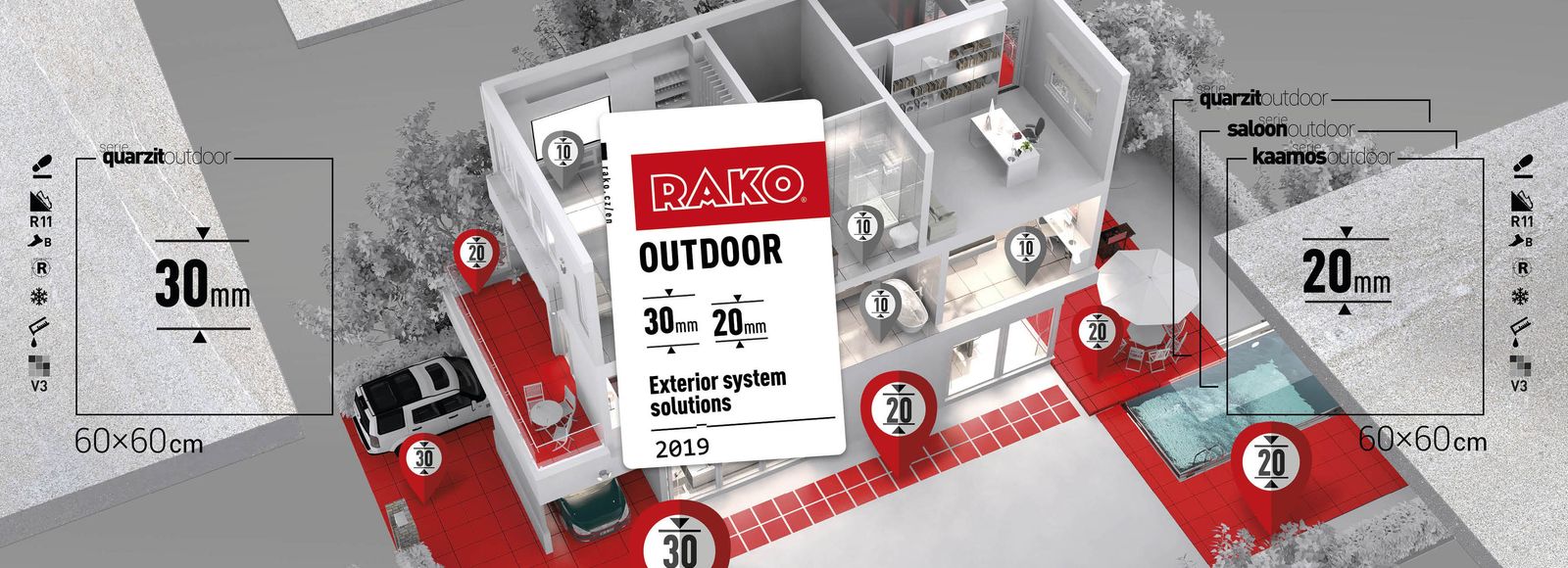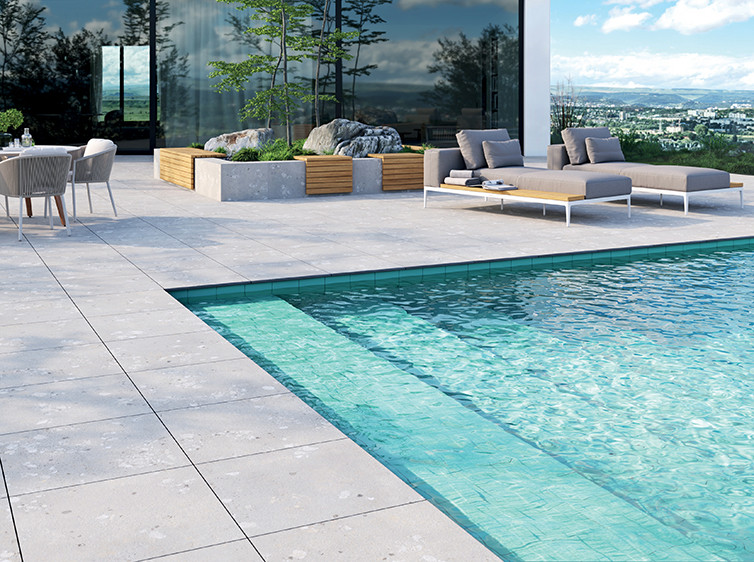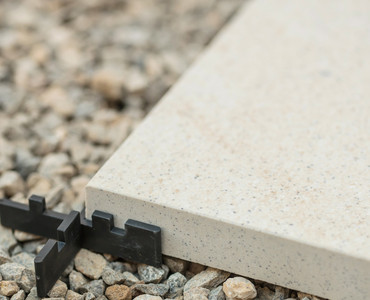
Exteriors
-

Rectified edge
-

Environmentally friendly product minimising environmental burden, EPD and LEED certifications
-

High chemical resistance
-

Highly sintered ceramic material 2 cm and 3 cm body thickness
-

Much easier to clean than concrete tiles, suitable for high-pressure cleaning
-

100% frost-proof material withstanding temperature changes
-

Easy installation with the possibility of removing the tiles for repair, servicing, etc.
-

R11/B anti-slip surface for a safe step
Advices and tips
Frequently asked questions
Are the tiles on the pedestals stable? Are there any limits?
If you stick to a proven system solution, then yes, the laying is stable. It is also important to bet on established pedestal manufacturers. Thanks to its thickness of 2 cm, the tile itself can easily accommodate the mechanical load of people walking on the pavement, and its weight makes it sit well on the pedestals. Detailed installation procedures in the form of an instructional video can be found here.
Warning: pavement on pedestals will not withstand vehicle traffic load. For this purpose, it is more suitable to lay the tiles into gravel and use tiles 3 cm thick, e.g. in the QUARZIT OUTDOOR.
What are the specifics and basic rules for tile laying into gravel?
The tiles are not fixed firmly in the adhesive as in the case of laying on pedestals. They lie loosely on the gravel, against which they rest unevenly. However, the contact surface is much larger than with pedestals. They are, therefore, more resistant to cracking compared to laying on pedestals. In any case, RAKO OUTDOOR tiles 2 cm thick are used for both laying methods.
Walking surfaces and vehicular traffic surfaces require different laying methods. For walking surfaces, such as on terraces, lay 2-cm RAKO OUTDOOR tiles on two gravel layers 2 cm thick each. For vehicular traffic surfaces (e.g., garage entrances), use 3 layers and tiles with 3 cm thickness. For edging the paving, use pebbles or turf, while concrete kerbs are used for vehicular traffic surfaces. Laying in gravel has almost the same advantages as laying on pedestals, compared to laying in an adhesive. Not only is it cheaper, it can also easily withstand vehicle traffic provided that 3-cm tiles are used. It is environmentally friendly as well. It does not waste the scarce water resources because water is returned directly to the sub-base layer and does not flow away from the landscape.
Remove the soil first before starting the laying procedure. The bottom of the excavation should have the required slope of 2% from the building, and the base layers should have the same thickness at all locations. The pavement surface slope should copy the 2% excavation bottom slope to facilitate water outflow and dirt removal from its surface. Follow the proven procedures and base layer documentation, a detailed description of which can be found in our instructional video at www.rako.cz/en/for-professionals. Where public pavements and roads are involved, comply with the requirements of ČSN 73 6133 Road body design and construction.
What tiles should be selected for vehicular traffic surfaces?
The method of laying in gravel using tiles 3 cm thick, e.g., in QUARZIT OUTDOOR series, is suitable for vehicular traffic surfaces. Use concrete kerbs for edging the paving.
-
RAKO Magazine - Hints and tips
Every reconstruction starts with the choice of ceramic materials. Interesting makeovers, advice, tips and instructions may come in handy.
RAKO Magazine


















